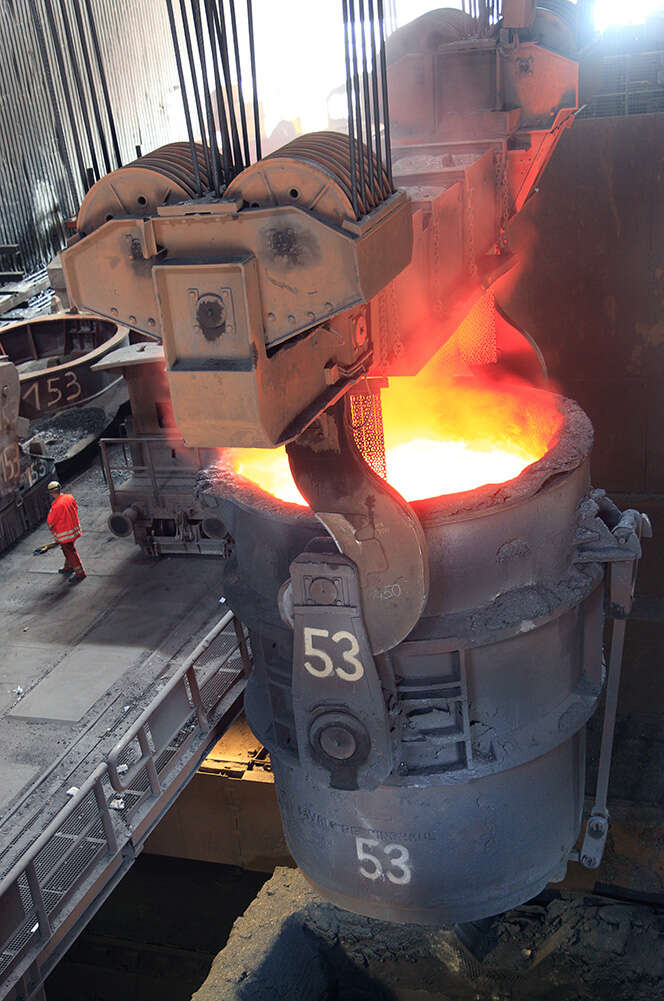On average, steel production accounts for around 4-5% of the total energy consumption of countries worldwide. Even if new technologies and processes in steel making are decreasing energy costs, disruptions to the melting process can quickly lead to rising costs and falling outputs. The impact of failing equipment can lead to days of delays, especially if a company relies on a single optical emission spectrometer (OES) for production control.
Don’t let the analytical equipment be your bottleneck
The answer is to have a high-quality instrument as a backup, so that you don’t have to lose productivity even if you lose your regular instrument for a period of time. While this seems like common sense from an operational standpoint, the costs involved can often be seen as a barrier.
Hitachi High-Tech’s OES instruments solve this issue by giving steel and metal production companies the performance and reliability they need at a more affordable price. The FOUNDRY-MASTER Smart and FM EXPERT are the perfect additions to any metal production operation, delivering high accuracy without the cost of a high-end OES instrument.

Reasons you need a backup
Many companies rely on a large photo tube detector equipped OES as their primary metal analysis instruments and are reluctant to entrust their operations to smaller devices with charge-coupled device (CCD) technology. There are a number of reasons for this. Firstly, smaller, but still powerful, instruments like the FOUNDRY-MASTER Smart and FM EXPERT have only become available in the last few years.
Secondly, many operators still believe that smaller devices can’t match the 20-year life span of the larger photo tube devices. While it is certainly true that in the past, CCD devices could only guarantee a lifetime of 10 years, newer devices like the FOUNDRY-MASTER Smart and FM EXPERT are built to be rugged and reliable long-term investments that add value throughout their lifecycle.
Here are the main reasons you should be looking at a mid-range spark spectrometer as your analysis backup:
Maintenance on larger devices can takes days
Getting a big device back up and running will usually take one or two days, as the maintenance of these machines can be complex. Even if a larger-scale steel plant or furnace has more than one large photo tube unit, it is unlikely that the remaining units will be able to absorb all the extra work of a broken unit all by themselves. An easy-to-use backup can help prevent costly bottlenecks in these situations.
Smaller devices are more versatile
The lightweight and versatile nature of smaller CCD instruments means that they can slot easily into any part of the production process and give high quality results. Whether you need to see if the correct chemical composition has been reached or whether more alloying agents need to be added, or you need an instrument to provide the final quality control check, smaller instruments can perform just as well as large photo tube units.
Smaller devices can also be used for a range of other tasks, whereas the larger instruments cannot. These other uses include the inspection of incoming materials from suppliers, avoiding mix-ups before delivery, sorting items for disposal or damage analysis and ensuring that process analytics are carried out on furnaces.
The results are high quality
Once the FOUNDRY-MASTER Smart and FM EXPERT have been calibrated and checked for accuracy with a few control samples, they are ready to start working.
A typical set up of steel plant laboratories is to have a central lab for all final samples and special tasks and smaller laboratories at the production sites near furnaces and converters for the process control. Typically, all are equipped with huge photo tube OES instruments.
Some German electric arc furnace steel plants with this typical laboratory set up have tested our CCD instruments for back-up process control. During this test they even faced a hot test scenario, where the main analyser was really out of operation. Samples analysed by our instrument were also measured by their existing large instrument in the central laboratory. The results from the different instruments corresponded very closely.
Entry level prices, high level performance
Making sure that our clients across the world are working in the most effective and productive way possible means giving them a range of options when it comes to high quality, reliable metals analysis.
The FOUNDRY-MASTER Smart and FM EXPERT are versatile enough to add value to any part of the metal production process, helping companies avoid unnecessary downtime and disruption. Through 40 plus years of experience in delivering effective analysis solutions, we have always focused on solutions that add the most value to day-to-day operations. Having a backup that can slot effortlessly into your operations without draining your resources means that you can always operate in confidence.
For more information on how to achieve optimal melt control in cast iron with OES analysis please download our guide.
Download